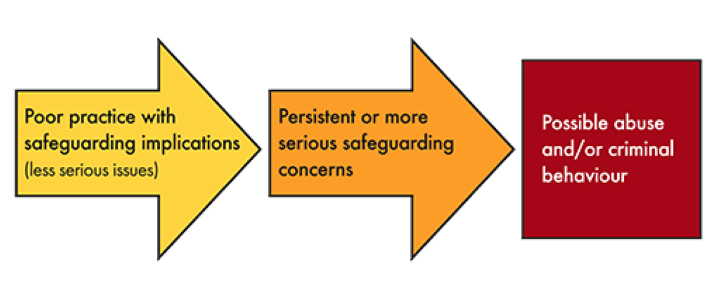7.3 Making an initial assessment of safeguarding concerns
All safeguarding concerns require a response, even anonymous ones. Safeguarding concerns include behaviour that is directly harmful, as well as behaviour (like grooming) that has the clear potential to lead to serious abuse. Concerns may be also based on signs that a person is distressed or has been abused.
Deciding on the seriousness of a concern
When your organisation is first made aware of a safeguarding concern, a decision needs to be made about its potential seriousness. In the Safeguarding Essentials course, a scale was used to indicate the seriousness of a concern. This showed how, sometimes, a concern that may at first appear to be less serious can quickly move up the seriousness scale when more information is known.
Placing the concern on a scale (see the diagram below) is a helpful way of making decisions, clarifying what action is required, and considering whether external child protection services or other organisations need to be involved.
When does my organisation need to respond to a concern?
Every safeguarding concern needs a response, including those which are anonymous. Even poor practice without any safeguarding issues requires a response – usually by the individual’s manager or Human Resources. More serious safeguarding concerns will need to be assessed and addressed by your organisation’s Safeguarding Lead.
Now you move on to explore how safeguarding concerns are assessed and you practise making a judgement about how serious concerns are.
7.2 Applying your learning: comment




